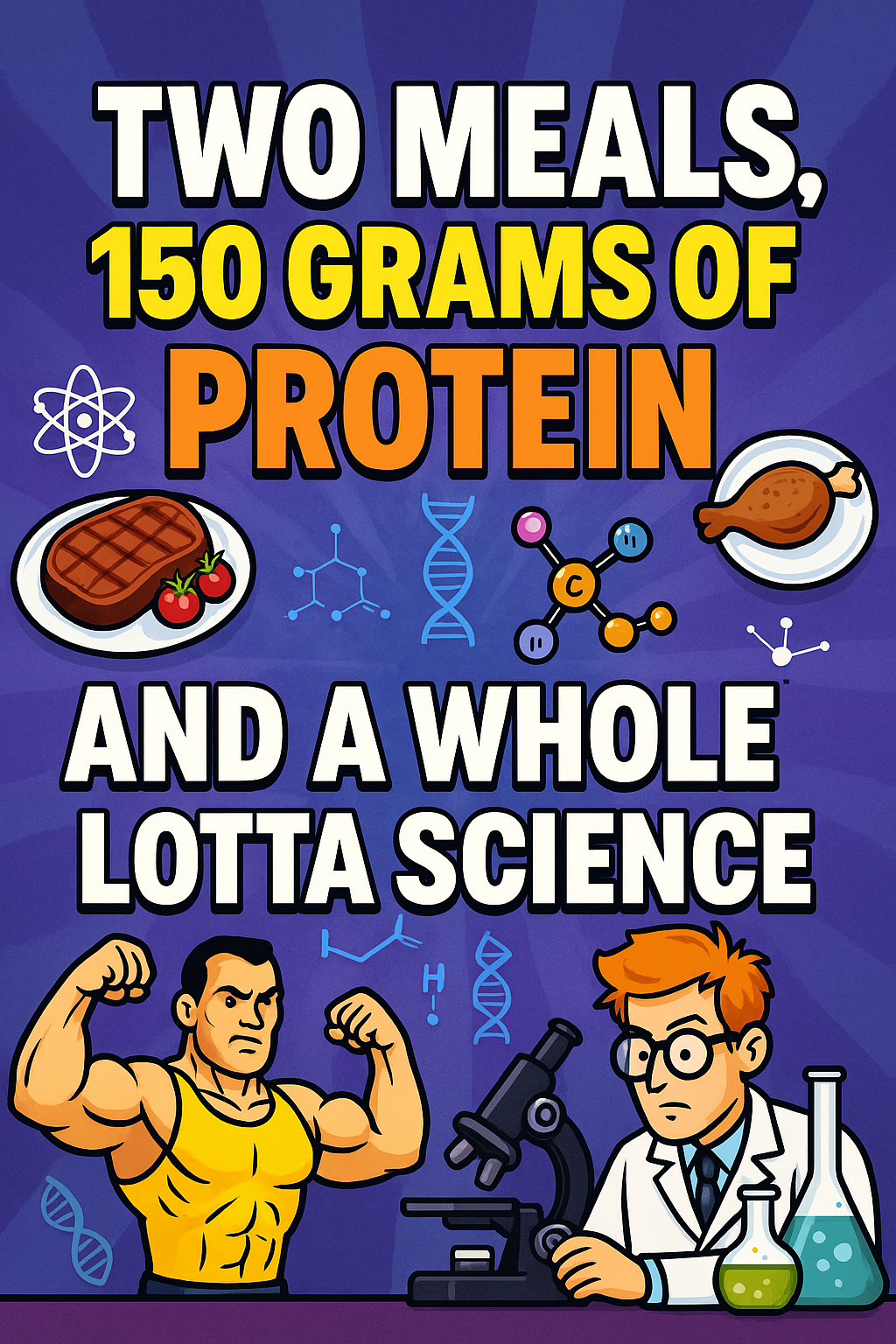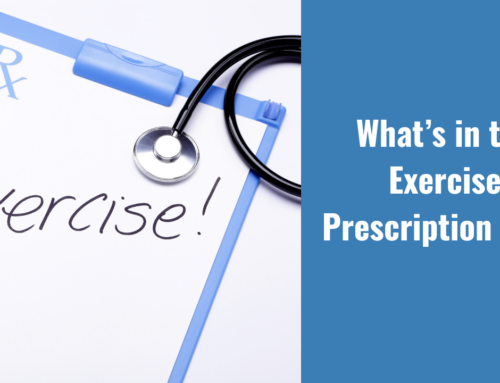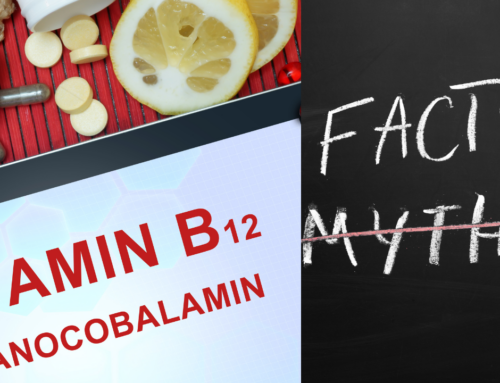Strap in, meatheads and metabolic misfits — I’ve got a new research grenade to lob into your protein-splattered meal prep.
This one is courtesy of my good buddy Dr. David Church (DC if you know him or @DrMyohead on Instagram and Dr. Myohead on X) and the crew at Arny Ferrando’s lab — with muscle-fiber-slaying minds like Dr. Katie Hirsch, Dr. Shy, and the entire lab crew of Dr. Robert Wolfe himself.
This brand-new research (1) was published in the Journal of Nutrition — yes, a legit RCT, not some influencer blog dressed up a furry in some bizarro PubMed cosplay.
This one’s got real teeth via stable isotope tracers my friend. They’re not guessing. They are literally following the heavy footprints of amino acids as they course through your sinew and soul.
The Setup: 2 Meals, 3 Protein Levels, 30 Humans
30 brave souls, average age 61 — welcome to the age of anabolic resistance, where your muscle says “nah, I’m good” even when you throw it a steak. If you are younger, think of this as a “worst case” scenario for the anabolic response to Bro-tein.
All were locked into eating just two meals per day, spread over a 9-hour window. No protein pixie dust in between.
Protein levels were split three ways to Sunday via:
0.8 g/kg/day (the dusty old RDA, perfect for dying slowly)
1.1 g/kg/day (aka the ‘murica default setting)
1.5 g/kg/day (the double-barreled shotgun of protein logic)
Why Two Meals?
Because they wanted to stab the total daily protein effect right in the heart — no distractions from meal frequency voodoo.
Plus several peeps “out there in the wild” and licking windows at PF only eat twice per day. Hence there is no “but what about my 11 a.m. cottage cheese snack?” excuses.
What They Found:
The 1.5 g/kg/day group came out swinging with significantly better via whole-body protein net balance.
The 0.8 and 1.1 groups? Nada. Barely moved the needle.
And get this — muscle protein synthesis (MPS) wasn’t statistically different between groups.
Here is what DrMyohead had to say
“When comparing the RDA to 2RDA we found the same numerical change and effect size as previous studies (2) and Oikawa 2020 Nutrients (3) who reported significant differences with larger feeding windows so we’re still moving the needle on MPS.”
In other words: you may not feel it in your muscle fibers, but your body’s rebuilding fortress walls behind the scenes at higher protein intakes.
If you weigh 100 kg (220 lbs), that top-tier group was pounding 150 grams of protein a day — just two meals, 75 grams per sitting.
That’s less of a meal and more of a ritual offering to the gods of hypertrophy.
But Wait — Isn’t That… A Lot?
Yes.
It is.
Eating that much protein in one go feels like trying to swallow a ribeye while bench pressing a Buick.

As Dr Myohead states “…it may not be an ideal way to eat, but the study does highlight that you’re not losing and major muscle growth gains if you miss a meal, you can just redistribute that protein to you next two feeding occasions.”
But here’s where the Trommelen study (4) slams in like a chair at a bar fight: in that study they fed people 100 g of protein in one shot, and guess what?
MPS kept humming for 12 hours
Only ~15% was oxidized.
So no, you’re not “wasting” that extra protein, unless your GI tract files a formal protest.
Keep in mind that other data has shown the same effect with whole-food mixed meals too (5, 6).
Protein Practical Portion
If you’re in a fat-loss phase and trying not to gnaw your own arm off, spreading protein across 3–4 meals is probably still your best bet.
Stuffing 100+ grams into one sitting? Not for the faint of gut.
That’s why I built the 4×40 strategy in the Flex Diet Cert — four meals, 40 grams each. Total: 160 grams. Sustainable. Effective. Not a GI horror movie. However, this study shows that acutely you can get a benefit, even in older adults, from two large protein meals.
TL;DR:
Mo’ protein = better protein retention, even in older peeps
Two meals = totally fine if you can stomach the dose.
Frequency might help, but the effect is marginal — maybe 5–10% (this is a guess)
The real beast is total daily intake — miss that, and you’re wasting time chewing celery sticks while your biceps whimper in protest.
So yeah, intermittent fasters — you’re not doomed.
Just don’t be the guy eating three almonds and calling it enough protein.
Let me know if you’ve been going full lunatic and testing this in the wild. I want to know if you’re thriving, bloated, or buried under a pile of protein fart regret.
Much love and meat sweats, Dr. Mike (and Dr Myohead)
P.S. Want more protein madness? Check out these podcasts below with Dr David Church himself and Dr Jorn on the 100 grams of bro-tein study
PPS – the Flex Diet Cert – which also features protein as the #1 interventions and never released expert interviews with Dr Stu Phillips, Dr Jose Antonio and Dr Michael Ormsbee, opens up June 16.
References
1. Church DD, Hirsch KR, Kviatkovsky SA, Matthews JJ, Henderson RA, Azhar G, et al. Effect of 3 Different Daily Protein Intakes in a 2-Meal Eating Pattern on Protein Turnover in Middle Age and Older Adults: A Randomized Controlled Trial. The Journal of nutrition. 2025;155(5):1364-72.
2. Kim IY, Schutzler S, Schrader A, Spencer H, Kortebein P, Deutz NE, et al. Quantity of dietary protein intake, but not pattern of intake, affects net protein balance primarily through differences in protein synthesis in older adults. Am J Physiol Endocrinol Metab. 2015;308(1):E21-8.
3. Oikawa SY, Bahniwal R, Holloway TM, Lim C, McLeod JC, McGlory C, et al. Potato Protein Isolate Stimulates Muscle Protein Synthesis at Rest and with Resistance Exercise in Young Women. Nutrients. 2020;12(5).
4. Trommelen J, van Lieshout GAA, Nyakayiru J, Holwerda AM, Smeets JSJ, Hendriks FK, et al. The anabolic response to protein ingestion during recovery from exercise has no upper limit in magnitude and duration in vivo in humans. Cell Rep Med. 2023;4(12):101324.
5. Kim IY, Schutzler S, Schrader A, Spencer HJ, Azhar G, Ferrando AA, Wolfe RR. The anabolic response to a meal containing different amounts of protein is not limited by the maximal stimulation of protein synthesis in healthy young adults. Am J Physiol Endocrinol Metab. 2016;310(1):E73-80.
6. Park S, Jang J, Choi MD, Shin YA, Schutzler S, Azhar G, et al. The Anabolic Response to Dietary Protein Is Not Limited by the Maximal Stimulation of Protein Synthesis in Healthy Older Adults: A Randomized Crossover Trial. Nutrients. 2020;12(11).




Leave A Comment